C2 PROJECT
C2 Photo Album
album:December 2017
The morning sun lights the top of Snowdon, Christmas 2017. The view from our Boston Lodge Works.


Manouvering the tender frames under the Asquith #1 (if only the works had a proper crane!)
Manouvering the tender frames under the Asquith #2
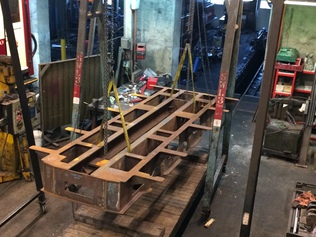
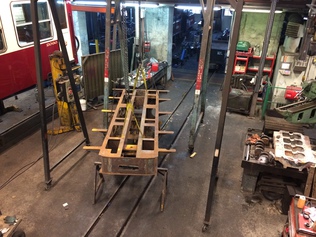
Manouvering the tender frames under the Asquith #3
Manouvering the tender frames under the Asquith #4
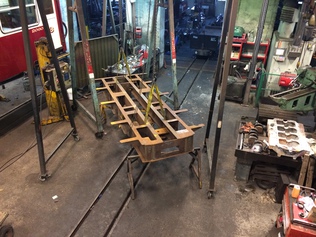
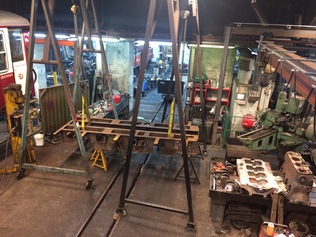
Manouvering the tender frames under the Asquith #5
Manouvering the tender frames under the Asquith #6
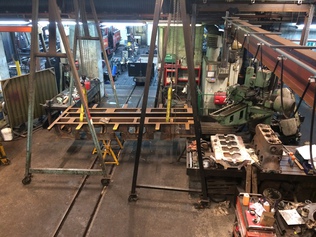
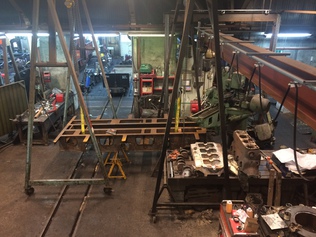
Manouvering the tender frames under the Asquith #7
Manouvering the tender frames under the Asquith #8 (finally in place!)
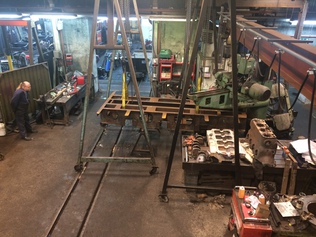
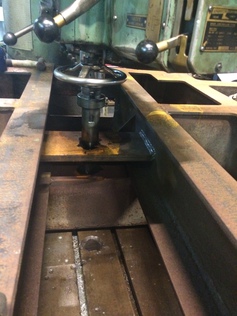
Reaming the hole for the front drawbar pin.
Drilling the holes for attaching the tender tank: Andrew with the mag-base drill while Dave operates the Asquith.
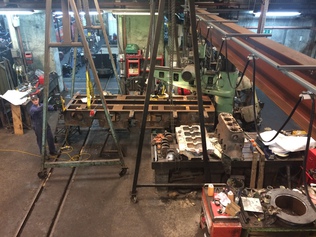

New bracket for mounting the speedometer connection box
We're using a traditional Smith's speedometer, as this design is used on the other FR locos and is familiar to drivers and maintenance staff. The speedometer drive will be mounted on one of the tender axleboxes, and linked by an armoured cable to this connection box, which also contains the calibration adjustment.
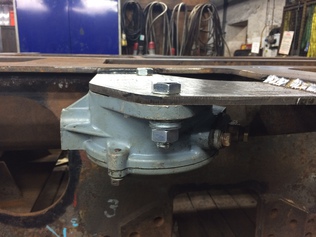
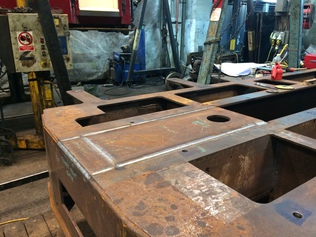
Now that the drawbar pin holes have been reamed and bushed, we could weld on the last two parts of the tender top plate. Also visible here are some of the small holes for mounting the tender tank.
Stages in Erle's work to machine some new spring rocker washers for the tender. He has found this project an interesting challenge and is progressing very well.
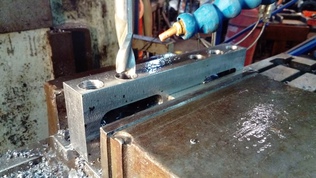
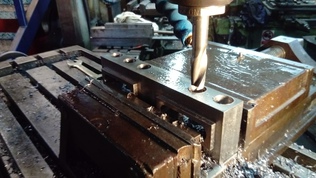
Stages in Erle's work to machine some new spring rocker washers for the tender.
Stages in Erle's work to machine some new spring rocker washers for the tender.
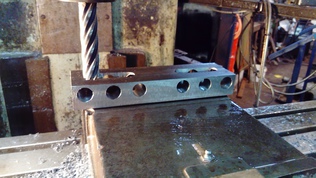
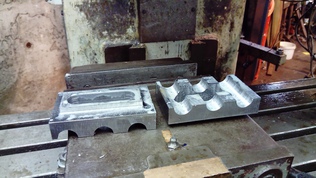
These should be finished with another day or two's work.
Paul 2 uses the hydraulic press to push a bearing outer race into one of the tender axleboxes. These components are all new.
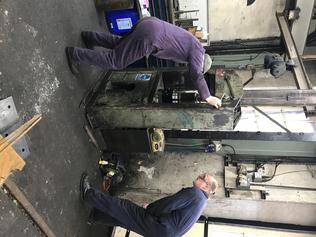
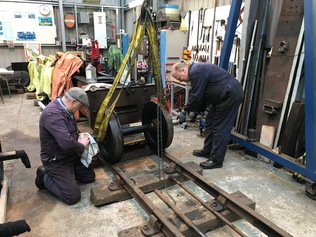
Dave and Paul 2 prepare a tender axle for fitting the axleboxes.
Tapered bridging piece to assist with fitting the tender axlebox rear covers to the axles. made by Dave.
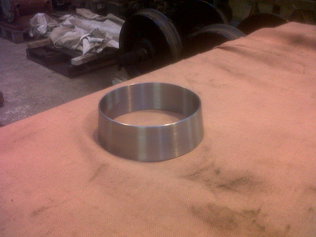
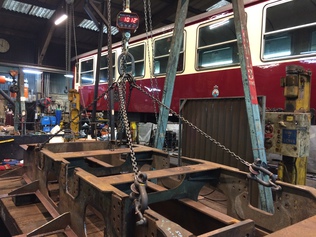
Weighing the tender frames. We think that Romanian carriage in the background would look good painted in the Chinese livery of dark green with cream bands!
Paul 2 uses the hydraulic press to push a bearing outer race into one of the tender axleboxes. These components are all new.
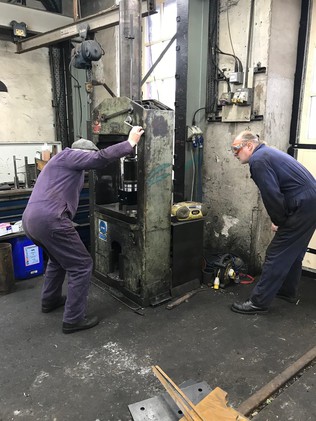
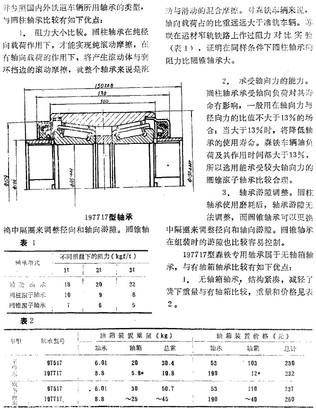
The Russian and European predecessors to the C2 had plain bearings, and most of the Chinese locos were built like this too. In the 1970s and 1980s, the Chinese implemented a conversion programme to roller bearings on the Forestry railway rolling stock, and this included the loco tenders. The loco axleboxes remained plain bearings but the coupling and connecting rods and valve gear were fitted with roller bearings too. Here's a page from one of the Chinese technical documents in our archives, illustrating the selected roller bearing type for the forestry railway rolling stock. The ones on our tender are similar. (郭栋柱, 197717型森铁专用轴承,《林业机械与木工设备》 1985年02期)